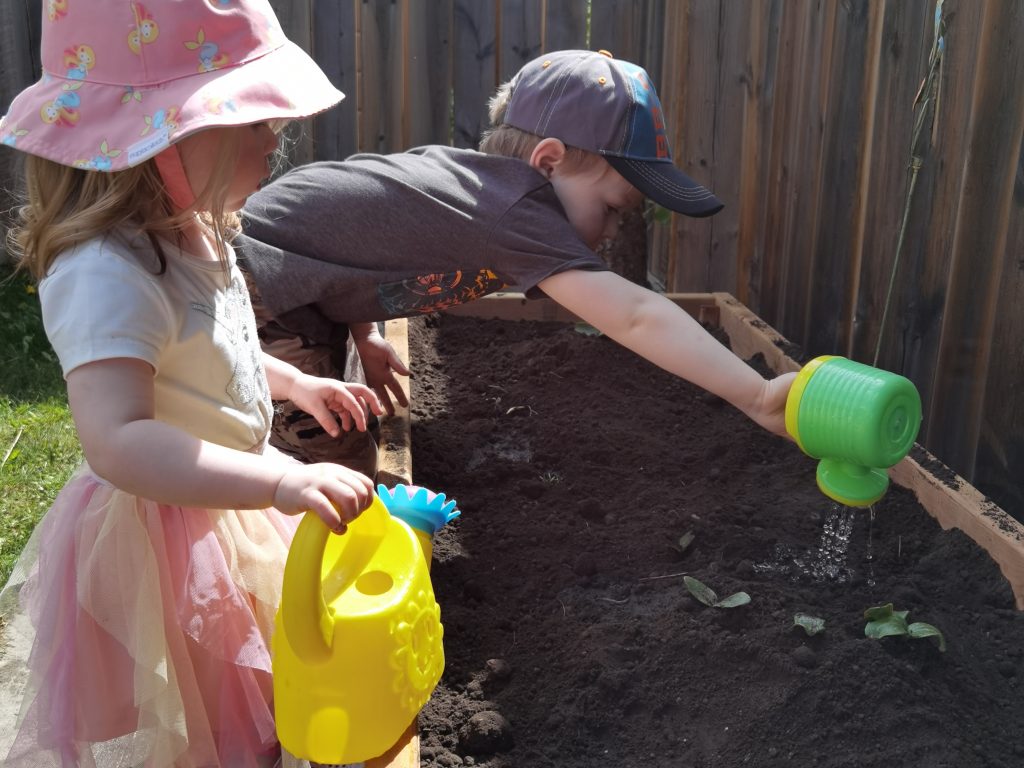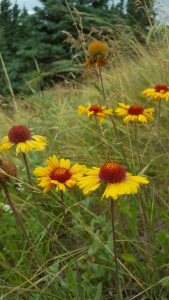How does a seed turn into a plant & why don’t all seeds germinate?

Growing native plants is fun for the whole family! STEPH WEIZENBACH
BY VALERIE MILLER, FUTURE ENERGY SYSTEMS
Welcome to Ask Stuart, a regular feature in which Stuart, our Nature Kids mascot (who just happens to be a swift fox) responds to questions asked by kids across Alberta. From time to time Stuart will also ask local experts to help him answer these questions. If you have a question you would like to ask Stuart, send it along to our Nature Network Assistant at naturekids@naturealberta.ca and it may be featured in a future issue.
Q How does a seed turn into a plant?

Blanket flowers growing wild - Steph Weizenbach
It all begins with germination: the process of a plant emerging out of the seed. Water is a really important part of germination. In the first step, called imbibition, the seed soaks up water and the outer layer begins to swell and soften. Next there is a lag period when the inside of the seed starts to become more active — it breathes and starts to make and store food and proteins.
Finally, we begin to see root emergence, as the plant starts to come out of the seed. The white part that emerges from the seed first is the early roots. In nature, roots may attach to the soil, keeping the plant where it is. The roots absorb water. After this step, the shoot will emerge and the seedling will continue to grow into a plant.
Q Why didn’t my seed germinate?
Different seeds have different needs to germinate. For a seed to germinate, it needs the right amount of water, light, and warmth.
Some seeds require lots of light whereas others require more darkness. Some seeds have an ideal temperature to germinate in; it may be too warm or too cold where you are testing your seeds. Seeds also need water to germinate, but too much water can be a problem if it stops seeds from getting oxygen.
Some seeds may never germinate under the conditions you are testing. This could mean that the seed is dead or that the seed is dormant. Dormant means that the seed is in a sleep period, which stops the seeds from germinating. You may be able to break dormancy by replicating the conditions seeds experience in nature. For example, storing the seed in cold replicates winter conditions that some seeds need before they germinate. Other seeds might need to be eaten by animals so that a hard outer layer of the seed can be reduced or removed — in this case we can scratch the seed surface. Some seeds need to be exposed to different chemicals, light conditions, temperatures, or even fire. (Don’t try that last one at home!) When these conditions are met, it signals to the plant that environmental conditions are best for it to grow.
Information from: https://extension.psu.edu/seed-and-seedling-biology
Learn more from Future Energy by exploring their Nature Kids Playlist on YouTube: bit.ly/naturekidsplaylist
This article originally ran in Nature Alberta Magazine - Spring 2022.
